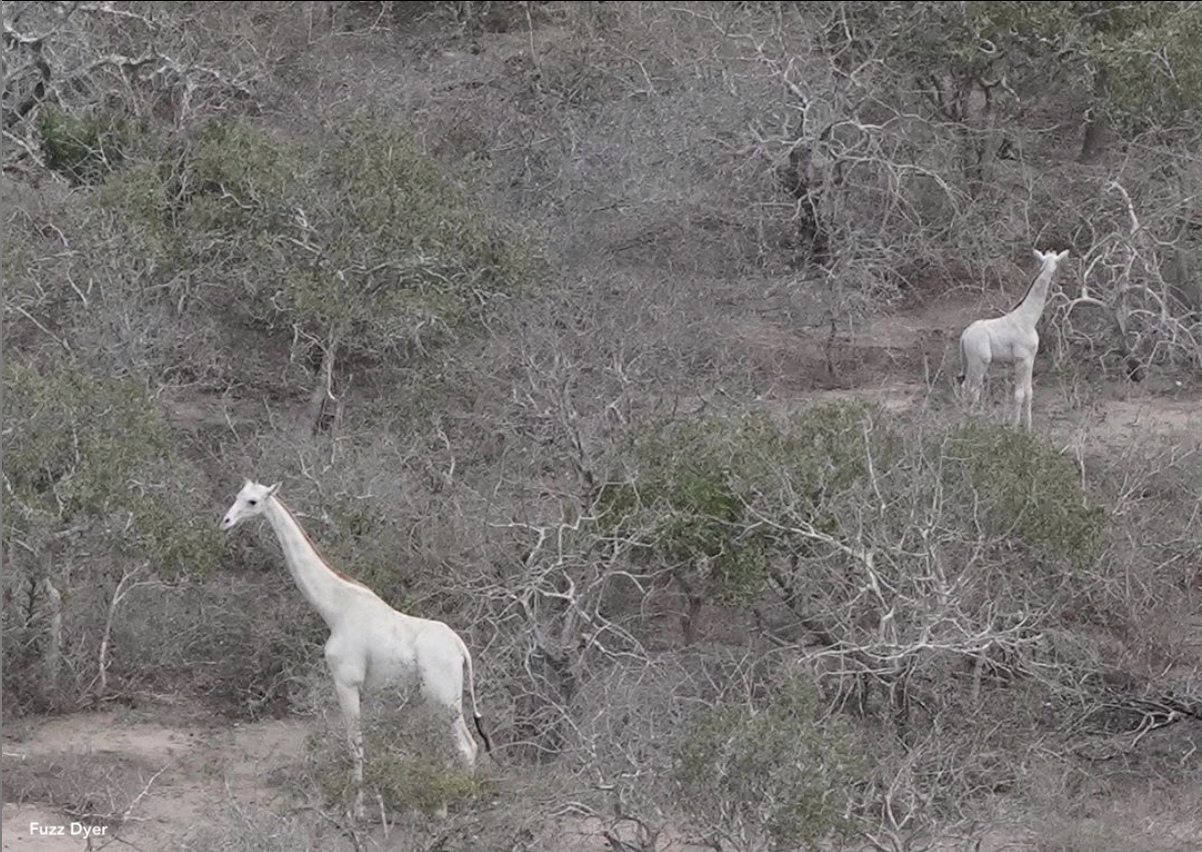The White Giraffes of Ishaqbini
Ishaqbini Conservancy's famous 'white giraffe' has given birth to a second healthy calf - with the same genetic condition as her - bringing the total number of white giraffes in the coastal conservancy to three.
It is thought their rare colouring is caused by a condition called leucism - which causes partial loss of pigmentation in the skin. Unlike albinism, animals with leucism still produce dark pigment in their soft tissue, which explains the family’s dark eyes and tail hair.
The only other known ‘white giraffe’ was spotted in Tarangire National Park, Tanzania, in January 2016.
The condition does not affect the giraffe's health in any way. “The only disadvantage would be predation because they are more conspicuous than the other giraffes,” says Steven Chege, a veterinary officer at NRT.
“We are so blessed to have these beautiful animals living in our conservancy,” says Ahmed Maalim, manager of the Ishaqbini Community Conservancy. “We are doing our best to monitor and protect them, seeing as they could be more vulnerable than other giraffes. The community really love them.”
Indeed all reticulated giraffes - the species found in Ishaqbini and across northern Kenya - are listed as ‘endangered’ by the International Union for Conservation of Nature. The Giraffe Conservation Foundation (GCF) estimates about 15,780 individuals remain in the wild – a decline of over 50% from the approximate 36,000 three decades ago.
The main threats to giraffe in Kenya include loss of suitable habitat (due to clearing of land for agriculture, tree-cutting for firewood and building, and infrastructure development) and poaching. Learn more about Kenya’s giraffe populations in this informative GCF poster.
Ishaqbini is also home to the critically endangered hirola antelope, which are thriving in a community-run sanctuary.

